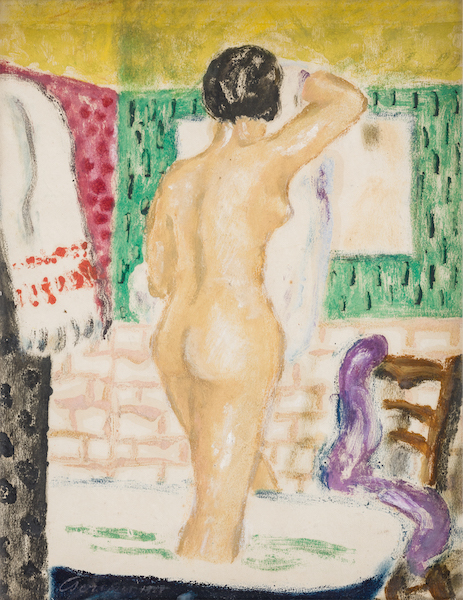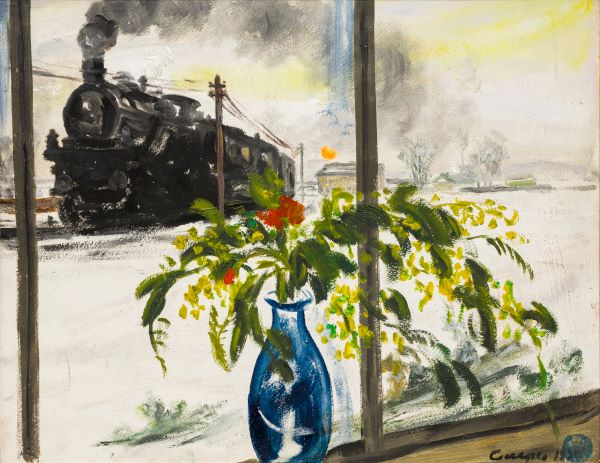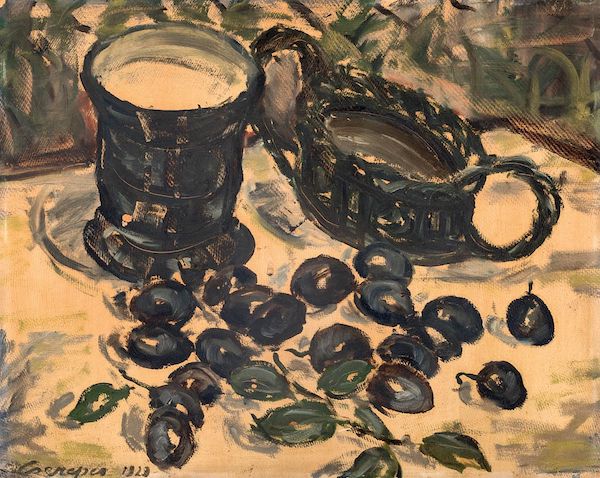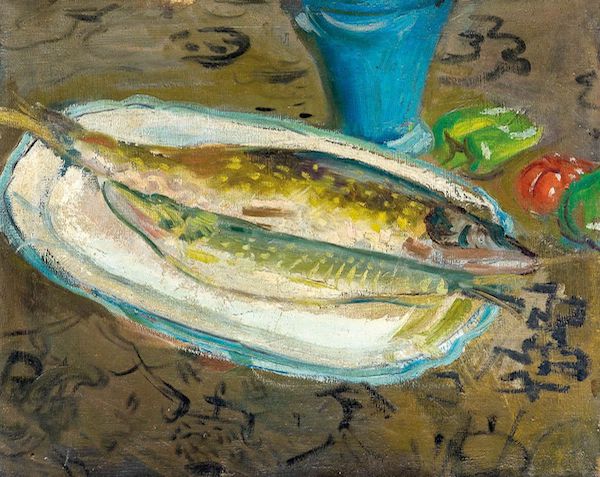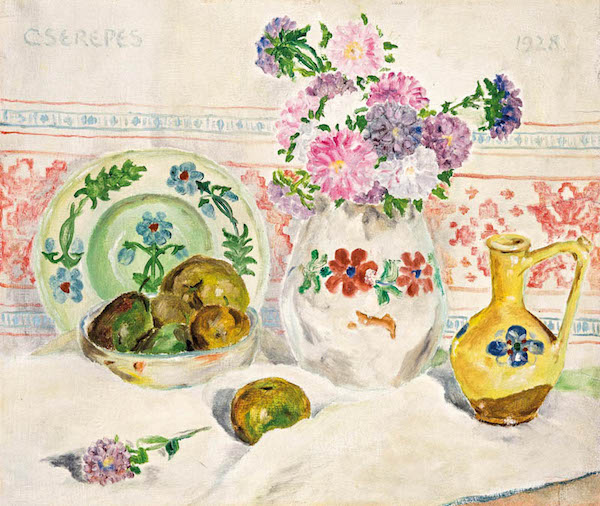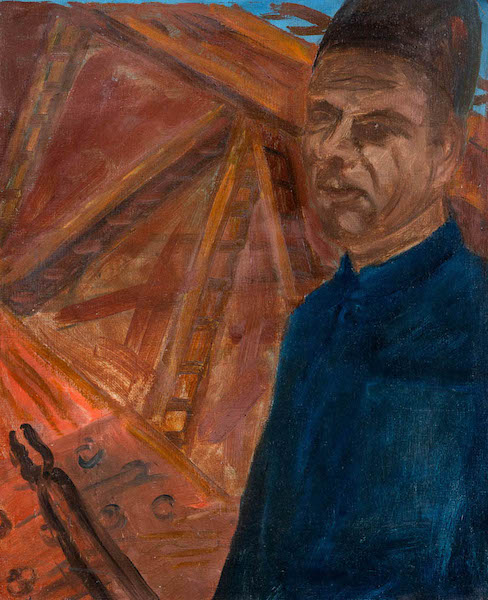Biography
István Cserepes was a painter, graphic artist, sculptor and goldsmith. He painted Impressionist images with a subtle atmosphere, capturing depictions of workers, still lifes and landscapes at Lake Balaton. He came from a working class, attended primary school in the countryside, and then began working in a blacksmith shop in Baja. From there he moved to Budapest as a heating worker, where in the evenings he visited Podolini Volkman's painting school. In 1926, at the encouragement of a friend, he applied to the College of Fine Arts, where his master, István Csók, obtained a tuition waiver. However, Cserepes left school after less than two years.
The choice of subject for his paintings was determined by the pursuit of his college master. Yet his painting created a peculiar world that could be explained by belonging to the working class. After his school years, he drew for Népszava and engraved a cover for the magazine, Young Socialist. After the Szinyei Society noticed the exceptional talent of at the National Salon, in 1929 he was awarded the Young People's Prize with "Honorary Recognition" for his presented works. As a friend of Gyula Derkovits, he then fought even harder for perfection, for the completion of his art, even in tight financial conditions. In 1929 he exhibited with Béla Iványi-Grünwald and Gyula Rudnay, in 1930 with Aurél Bernáth and Ödön Márffy at the Ernst Museum. In 1931, with a state scholarship, he was creating in Paris, where his gloomy gray palette was colored. He won the Pastel Prize in 1935, and his works were awarded prizes and diplomas at the World's Fairs in Paris in 1937 and in New York in 1939. In 1940 he won the prize of the Szinyei Society. From 1931, he lived at 37 József Street in the Eighth District, in the courtyard of which studios were set up. The building was created over the decades by such famous painters and sculptors as Géza Maróti, Pál Pátzay, Béni Ferenczy, Pál Gerzson and István Martsa. His last dated pictures were taken in 1943, near Lake Balaton.
In March 1944, a few days before the German occupation, he exhibited his plastic work in the exhibition space of the Műbarát. His works represented the lives of the workers, the situation of the proletarians, the socialist worldview of the artist, which official cultural politicians considered rebellious.He became persecuted for his views during the war. He stayed in Szentendre for a while, and when he had to flee, Derkovits's wife offered him housing in Rákoscsaba. The persecuted Cserepes did not want to endanger anyone and returned to Pest, József Street. He hid Jews and runaway soldiers in his room. In December 1944, when the Arrow Cross was hunting down the escaped soldiers in the house, the janitor testified that he came out into the yard and openly despised the Arrow Cross methods. On December 18, 1944, he was captured, shot dead, and his body was thrown into the Danube. Those he hid stayed alive.
In 1960, the National Gallery and the Art Gallery organized a potted memorial exhibition at the Ernst Museum. The work of István Cserepes is a progressive and unsinkable value of the culture of the Hungarian people. His worldview and artistic form were determined by István Csók and Gyula Derkovits.

